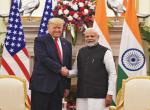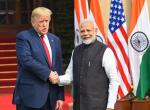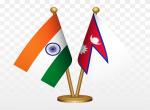Slowly and surely, the middle kingdom seems to be emerging as a preferred “soft target” of terrorist violence spearheaded by a radical outfit with its alleged links to the notorious Al Qaeda. For the communist China, which not long back was least worried about the devious doings of global terrorist networks, disturbing developments in its home-turf in recent months have brought home the looming threat of terrorism in all its manifestations.
Not surprisingly then the violent stabbing spree at Kunming railway station in Yunnan province on March 1 has set the alarm bells ringing in China’s security set up. Incidentally, the south westerly Yunnan province whose capital is Kunming has had no history of a terrorist attack or social violence. Much to the dismay of Chinese security and intelligence agencies, the knife wielding attackers who encountered virtually no resistance initially left 33 people dead and 130 injured in one of the bloodiest incidents ever reported in this part of the country. China’s official Xinhua news agency described this pre-meditated violent incident as “China’s 9/11 and a severe crime against humanity”. The authorities of the Kunming Municipal Government were quick to point out that evidence at the crime scene showed that the attack was organised by the Xinjiang based Uighur separatists. Significantly, this is for the first time that militants allegedly belonging to the, which is fighting for a sovereign Muslim majority Xinjiang country, managed to carry out such a frightening and violent attack outside their home-turf. The suspicion is that the attack could be a part of the long term strategy of Uighur separatists to hit soft targets deep inside China with a view to create “fear psychosis” and draw global attention to their on-going struggle for a separate Muslim majority Xinjiang country.
The Patronage that the banned East Turkestan Islamic Movement (ETIM) is said to be receiving from Al Qaeda is considered a major factor behind its rapidly expanding acts of violent terrorism.
Nevertheless, this is not the first act of terrorism mounted by Uighur separatists outside of the Xinjiang province. In October last, a terrorist attack in the capital city of Beijing had stunned and rattled China. This well planned violent attack at the historic Tiananmen Square had resulted in the death of five people. In the aftermath of this incident, the ruling dispensation in Beijing had described this terrorist outrage in the heart of China’s capital city as a “pre meditated and well planned suicide attack” aimed at destabilizing the Communist giant. This attack which was also blamed as the handiwork of ETIM marked a significant shift in the militant activities of ETIM whose violent activities were for long confined to Xinjiang. Chinese authorities drive home the point that ETIM has for long been engaged in Central, East (By "East" , the Chinese authorities imply the possibility of Uighur extremists having linkages with Muslim separatists in Southern Thailand and insurgents in Mindanao island of Philippines) and West Asia and has joined hands with many of the terrorist outfits with global footprints. ETIM cadres are known to have fought alongside Taliban militia in Afghanistan and rebel forces in trouble torn Syria. Clearly and apparently, China has enough to worry about ensuring its domestic peace and territorial integrity in the face of brazen terrorist attacks.
In a well thought out move aimed at psychologically paralysing the terrorist outfits by blocking their funding sources, China’s Central Bank has announced new measures aimed at enabling authorities to freeze assets of domestic terrorist groups and their “overseas patrons’. Cutting off the source of funding could take the sail out of the winds of a terrorist group. India too needs to take steps to end the “hawala racket” which has become a major source of funding for terrorist outfits, criminal gangs and anti social networks in the country. Chinese security agencies believe Afghanistan, Pakistan and Central Asian Republics offer safe sanctuary to the fugitive Uighur separatists owing allegiance to ETIM For long there has been a suspicion that ETIM gets funds, training and psychological motivation from Al Qaeda. The Islamabad based Pakistan Institute for Peace Studies had indicated that Uighur separatists from Xinjiang province of China mainly frequent the mountainous North Waziristan, the most turbulent part of the lawless tribal belt. Indeed, Beijing has on many occasions expressed its displeasure over the failure of Pakistan to crack down on Uighur terror groups. Chinese officials in Xinjiang blame ETIM overseas cadres, chiefly those active in camps of Pakistan, for fomenting trouble in many parts of the province. This largest Chinese province in the extreme west of the country shares porous borders with both Pakistan and Afghanistan. Uighur extremists are also known to have forged strong links with radical Islamic groups in the Central Asian Republics.
For well over two decades now, the ruling dispensation in Beijing has been blaming Uighur extremists for acts of sporadic violence and destruction in the sprawling and resources rich Xinjiang where 12-million ethic Uighurs reside. Currently, Uighurs constitute 45% of the total population of Xinjiang. Uighurs are upset that with the state supported plan to settle Chinese Hans in the restive Xinjiang, they are doomed to end up as a minority group.
Since 1990s, Xinjiang has been making it into the media headlines for acts of violence indulged in by the disgruntled Uighurs who see a repressive streak in the policy designed for them by the rulers in Beijing. China is of view that ETIM is trying to insulate itself from the country’s counter terrorism measures by developing robust transnational ties that include alliance with other terrorist groups and safe operational bases in other countries.
Uighurs are quite upset that their religious, cultural and commercial activities are being curtailed by Beijing presumably to put a lid on the separatist sentiments embedded deep in the psyche of the community. In recent years, Chinese authorities have been pressurising Uighur men not to grow beards and Uighur women not to use veil or other Islamic attire. These measures have been justified by Beijing as a cornerstone of the strategy designed to end the spread of religious extremism said do be responsible for the violent separatist movement. Many Uighurs say that they are made to feel like second class citizens in their home turf. Uighurs are upset that the Chinese speaking Hans in Xinjiang have cornered most of the civil service jobs and are forging ahead in business and professions.
In 2009, around 200 people had paid with their lives in one of the bloodiest clashes that took place between native Uighurs and Han settlers in the provincial capital of Urumqi. And in April 2013, violent clashes involving Uighurs and policemen in Kashgar had left 21 dead. Further in June.2013, 35 people were killed in an attack against a Police Station in Luquan. Uighurs who follow a moderate version of Sunni Islam are clear that repressive policies aimed at the community is at the root of on-going “unrest and turbulence” in the province. But Uighur uprising has never attracted the global attention the way Tibet has. Strategic analysts believe, however, that Uighur uprising could pose a serious threat to China’s territorial integrity in comparison to the turbulence in Tibet. For now, by design or accident, Tibet is on the way to slowly getting integrated into the “Chinese mainstream”. But then the festering unrest and turmoil in Xinjiang has all the potentials of graduating into a full scale and well armed separatist movement that China can ignore at its own peril. It is not for nothing that Xinjiang has been described as China’s emerging West Bank.
Published Date: 25th April 2014, Image source: http://www.scmp.com









Post new comment